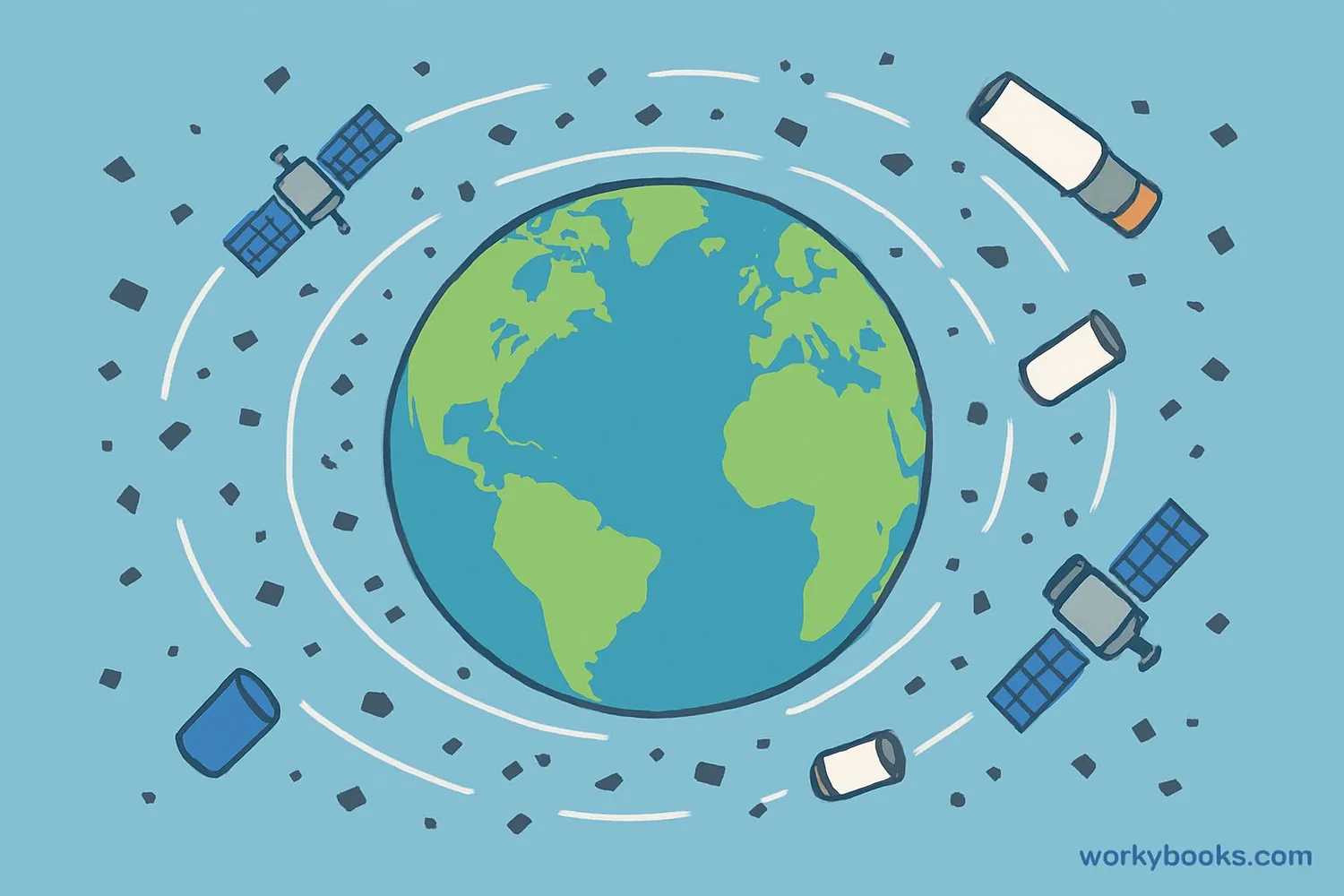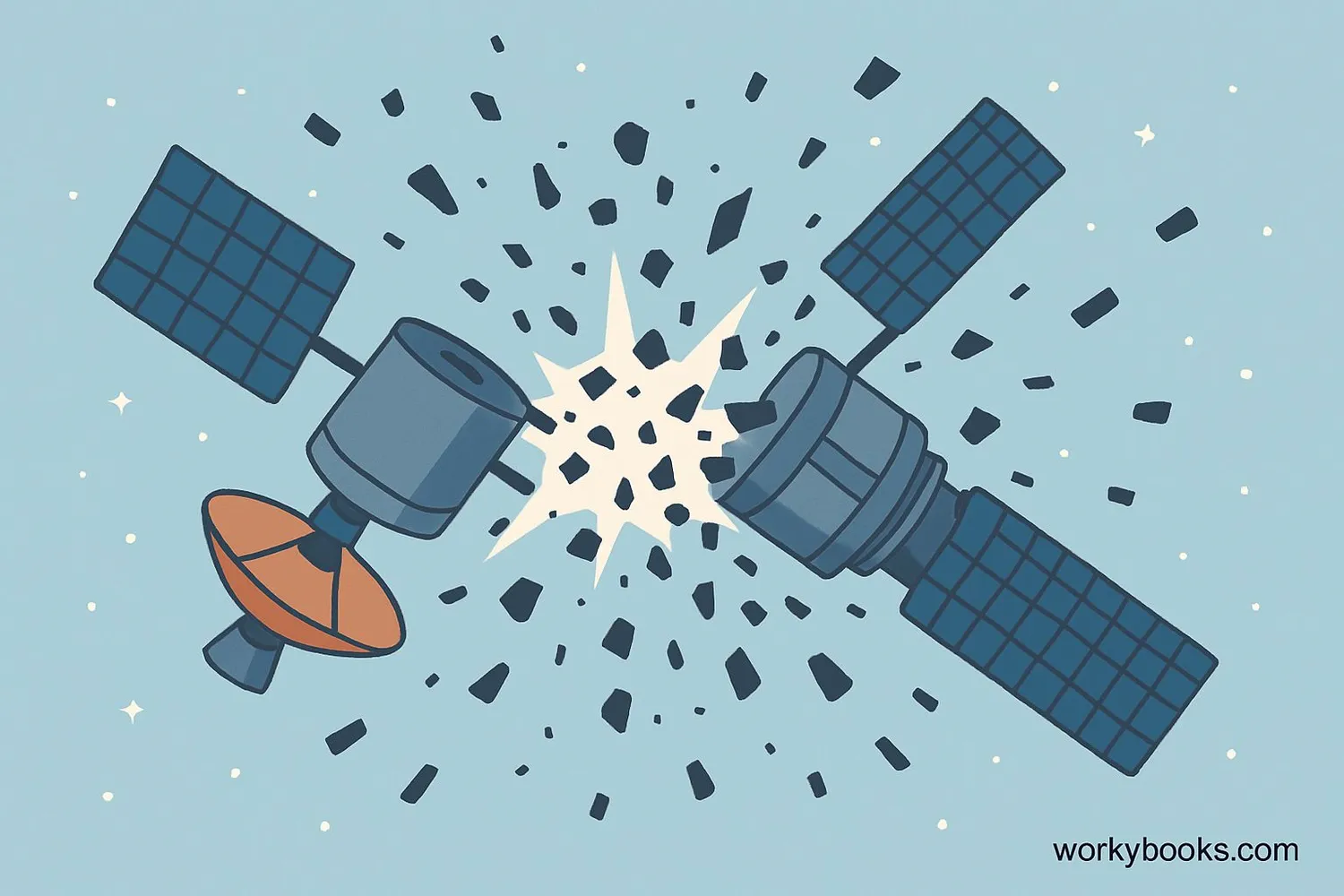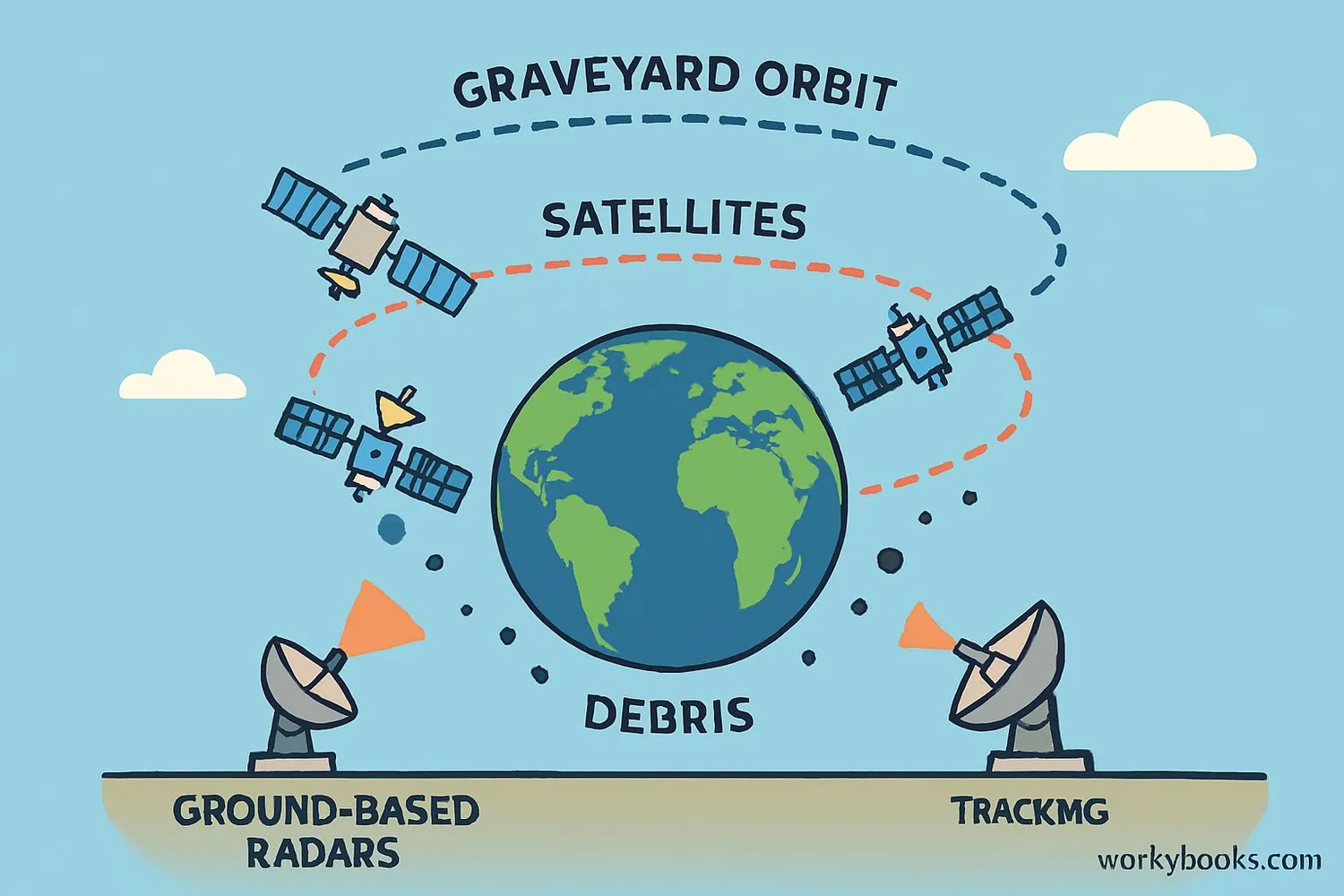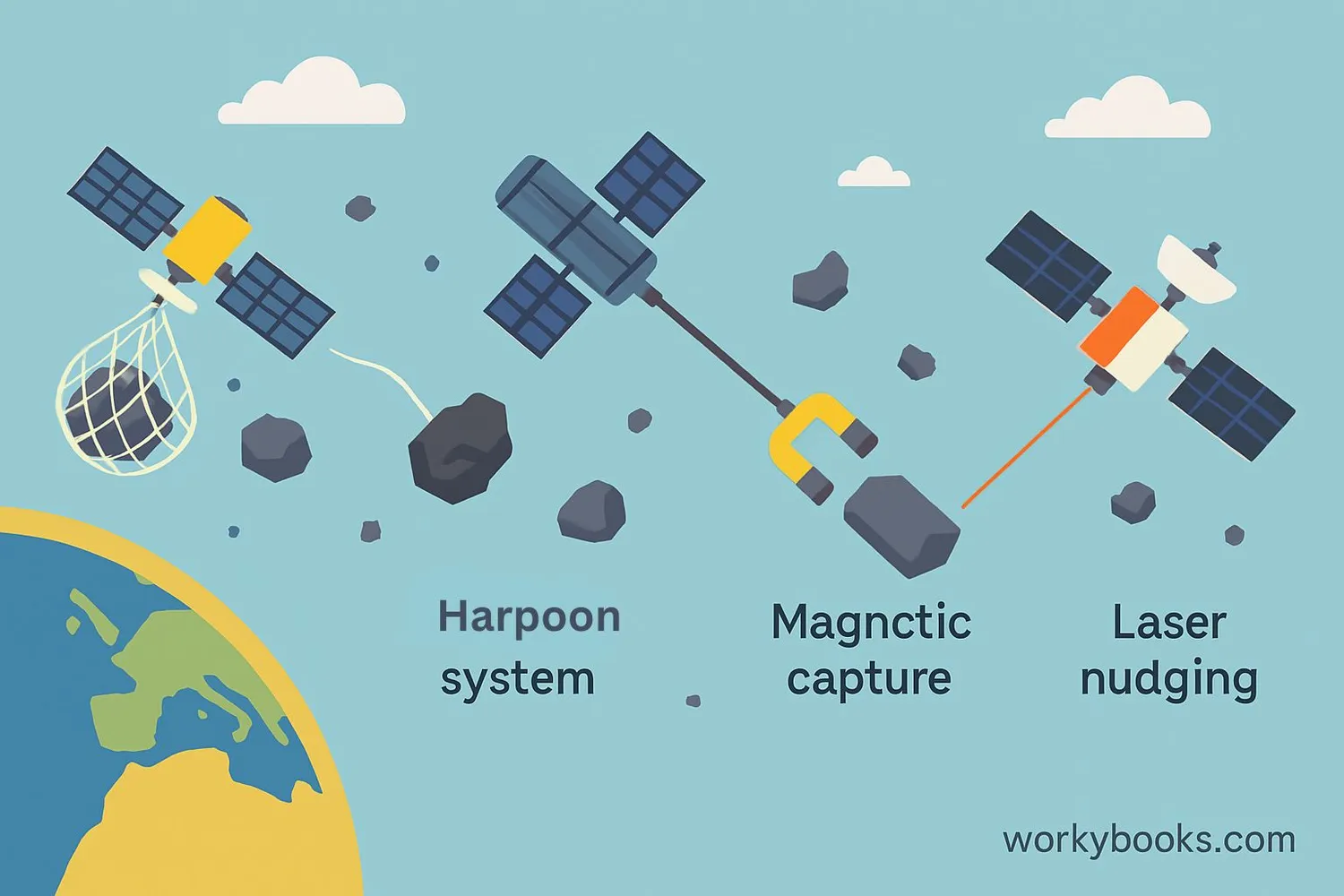Dead Satellite Collisions - Definition, Examples, Quiz, FAQ, Trivia
Discover what happens when satellites stop working and how we're solving the problem of space debris
What is Space Junk?

Space junk, also called orbital debris, is all the human-made objects orbiting Earth that no longer work. This includes:
• Dead satellites that stopped working
• Rocket parts left in space after launches
• Tiny fragments from collisions or explosions
• Tools lost by astronauts during spacewalks
Just like trash on Earth, space junk keeps building up. There are about 128 million pieces of space debris orbiting our planet right now! Most are tiny, but even something as small as a paint fleck can be dangerous when traveling at 17,500 mph.
Space Junk Fact!
The oldest piece of space junk is Vanguard 1, a satellite launched in 1958 that's still orbiting Earth today!
Collision Risks and Kessler Syndrome

When dead satellites or other space junk collide, they create thousands of new pieces of debris. This creates a dangerous chain reaction called Kessler Syndrome:
Collision Occurs
Two objects collide at high speed
Debris Created
Thousands of new fragments scatter
More Collisions
Debris hits other objects, creating more debris
Chain Reaction
Collisions multiply exponentially
Unusable Space
Orbits become too dangerous for satellites
Consequences of satellite collisions:
• Damage to working satellites that provide weather forecasts, GPS, and communications
• Danger to astronauts aboard the International Space Station
• Risk of falling debris reaching Earth's surface
• Higher costs for satellite operators to avoid collisions
• Possible future where space becomes unusable
Real World Example
In 2009, a working Iridium satellite collided with a dead Russian satellite, creating over 2,000 pieces of trackable debris!
Tracking and Avoiding Collisions

Scientists and engineers work hard to prevent collisions using these methods:
Space Debris Tracking
Radar and telescopes monitor debris larger than 10 cm
Collision Avoidance
Satellites maneuver to avoid potential collisions
Graveyard Orbits
Dead satellites moved to special disposal orbits
Satellite graveyard orbits are special zones about 200 miles above normal orbits where dead satellites are moved at the end of their lives. This keeps them away from working satellites and reduces collision risks.
The International Space Station has performed over 30 collision avoidance maneuvers since 1999 to avoid space debris. Each maneuver uses precious fuel and requires careful planning.
Cleaning Up Space Junk

Scientists are developing creative ways to clean up space junk:
Space Nets
Special satellites that capture debris with nets
Harpoons
Spear-like devices that capture large debris
Magnetic Capture
Using magnets to attract and remove debris
Laser Nudging
Ground lasers gently push debris into safer orbits
Space debris mitigation is also important - preventing new debris from forming:
• Designing satellites to burn up completely when they re-enter Earth's atmosphere
• Requiring satellites to have enough fuel to reach graveyard orbits
• Preventing explosions by emptying fuel tanks and batteries
• International cooperation on space traffic rules
Removing just 5-10 large pieces of debris each year could prevent Kessler Syndrome from happening!
Space Debris Quiz
Test your knowledge about space junk and satellite collisions with this quiz!
Frequently Asked Questions
Here are answers to common questions about space junk:
Space Junk Trivia
Discover amazing facts about space debris!
Size Matters
There are about 128 million pieces of space debris smaller than 1 cm, about 900,000 pieces 1-10 cm, and about 34,000 pieces larger than 10 cm orbiting Earth right now!
Oldest Space Junk
The oldest piece of space junk is Vanguard 1, launched in 1958! It's still orbiting Earth and is expected to remain in space for another 240 years before re-entering the atmosphere.
Space Station Armor
The International Space Station has special shielding called "Whipple shielding" that can withstand impacts from debris up to 1 cm in size. It works by breaking up debris before it hits the main hull.
Space Tool Bag
In 2008, astronaut Heidemarie Stefanyshyn-Piper lost a tool bag during a spacewalk. This 30-pound bag became space junk and was visible from Earth before burning up in the atmosphere months later.


